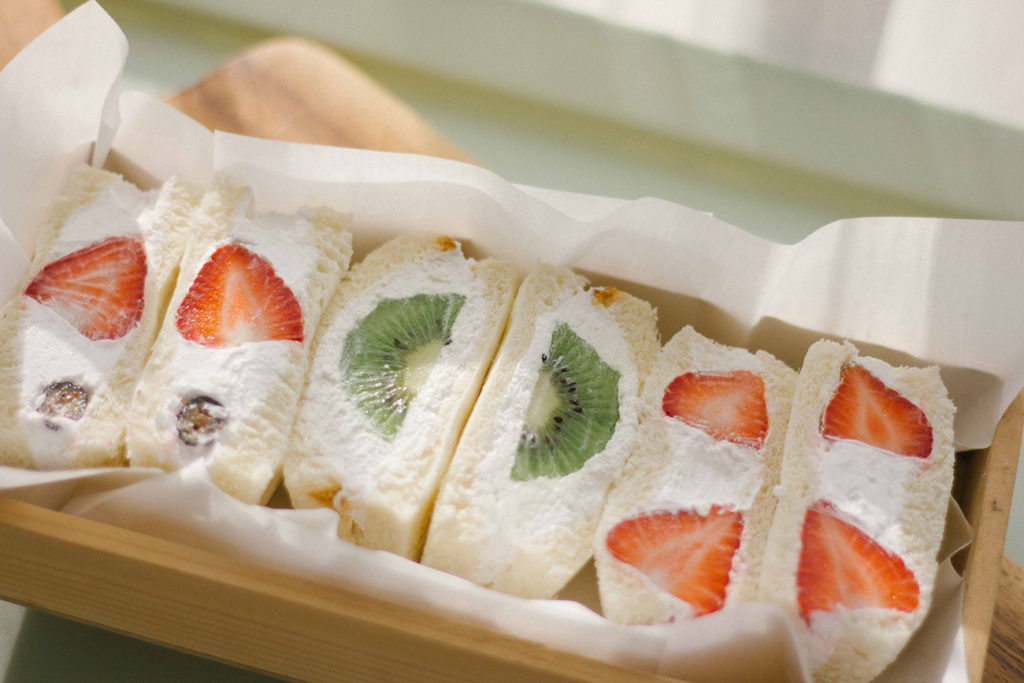
Popular Unique Japanese Eats!
Japanese cuisine offers an array of gastronomical delights with a vast range of regional and seasonal dishes. With the country being divided into unique geographical regions, each region has developed its own distinct culinary customs. Dishes served in various places around Japan offer a diverse collection of regional foods that gives Japanese cuisine its own unique complexity.
Japan is also popular for having the most interesting things from the kawaii (cute) to the unbelievably weird. This too holds true for some types of food that are unique to Japan. Check out some of the unique food to try when in Japan:
Fruit Sando
Fruit sando are found almost everywhere in Japan. They’re fruit sandwiches with cloud like, lightly sweetened whipped cream filling on a fluffy tangzhong bread.
The common chunks of fruit found in a fruit sando are kiwi, strawberries, banana and canned peaches. The fruits seem like they’re floating in between white fluffy bread on a cloud of whipped cream. It makes a great snack or dessert in between meals.
Fruit sando.
Pocari Sweat
The name Pocari Sweat alone may sound totally unappealing for a beverage, but it is one of Japan’s most popular sports drink. It is a mild tasting, non-carbonated sweet beverage that was launched in 1980 and is now available in East Asia, Southeast Asia, Middle east and Australia.
Pocari Sweat
The name was derived from the intent of the product to supply the drinker with all the nutrients and electrolytes lost when sweating.
Fujisan Bread
Fujisan bread is named after Japan’s tallest peak, Mount Fuji. The delicious bread is made using the Japanese dough-making technique combined with French pastry methods to create a delicate type of brioche bun with sumptuous croissant-like layers. Although it has French influences, most the recipes of Fujisan bread are from Chinese origins. Unlike French folded doughs, Fujisan bread is made using a tangzhong, a Japanese style of preparing cooked water and flour that when cooled, is folded into the dough mixture. This process is said to give breads a softer and creamier texture and allows it to stay fresh longer. The characteristic swirl of Fujisan bread is created using the French pastry school technique of turning and folding called lamination. The laminated dough is then braided and swirled before being placed in a container to bake, rise and bloom over the edge of the pan like a mountain erupting. A light dusting of powdered sugar ensues to mimic the snow-capped Mt. Fuji.


